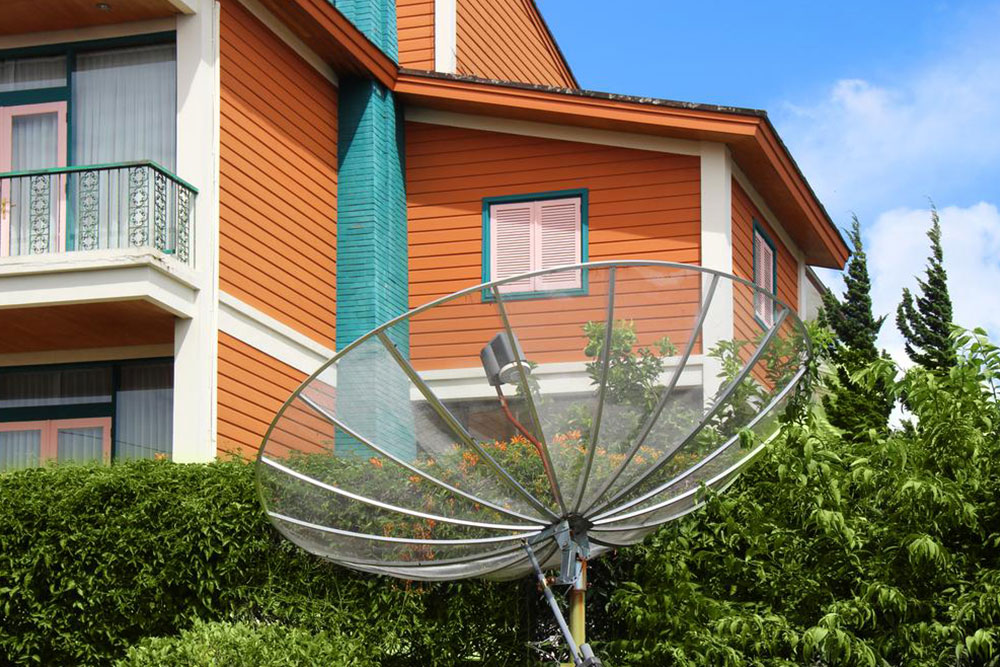Top 3 Innovative Rural Internet Solutions for Reliable Connectivity
Discover the top three rural internet solutions designed to offer reliable connectivity in remote areas. This comprehensive guide covers Satellite Internet, Wireless Broadband, and Mobile Wireless services, helping residents make informed choices for seamless online experiences. Learn about benefits, limitations, and deployment considerations to enhance your digital life in rural settings.

Living in rural areas offers a unique blend of peaceful surroundings, stunning natural landscapes, and a healthier environment. However, one of the persistent challenges for residents in these regions is establishing a stable and high-speed internet connection. Traditional internet options such as cable and DSL services often struggle to reach remote locations effectively, leaving many rural households underserved and disconnected from the digital world. In recent years, technological advancements have paved the way for a variety of effective solutions tailored to meet the connectivity needs of rural communities. This comprehensive guide explores three of the most reliable and widely adopted rural internet solutions: Satellite Internet, Wireless Broadband, and Mobile Wireless Internet. Whether you're working from home, streaming videos, or staying connected with loved ones, these options can help ensure consistent internet access in even the most isolated areas.
Understanding the Challenges of Rural Internet Connectivity
Before diving into the solutions, it’s essential to understand the unique challenges faced by rural residents regarding internet access. Unlike urban areas, where extensive wired infrastructure makes high-speed internet readily available, rural regions often lack the necessary broadband backbone. Factors such as geographical isolation, difficult terrain, and lower population density make it economically unfeasible for service providers to invest in traditional infrastructure. As a result, many rural households rely on outdated dial-up or satellite connections that offer limited bandwidth, slow speeds, and unreliable service. This digital divide hampers educational opportunities, access to healthcare, remote work, and access to information, underscoring the importance of adopting new technological solutions tailored to these areas.
Satellite Internet: Bridging the Gap from Space
Among the most popular and accessible solutions for rural residents is Satellite Internet, which leverages space-based technology to provide connectivity in areas where terrestrial infrastructure is limited or nonexistent. This service operates much like traditional satellite TV, involving the installation of a satellite dish outside the house. The dish communicates with satellites orbiting high above the Earth, facilitating a wireless connection that covers vast geographical regions.
Advantages of Satellite Internet
Wide Coverage Area: Satellite internet can reach even the most remote locations where wired infrastructure is unavailable.
Ease of Installation: Installation primarily involves setting up a satellite dish and a modem, making it suitable for rural households without existing cable infrastructure.
Rapid Deployment: Once installed, users can access the internet without the need for extensive ground works.
Considerations and Limitations
Latency Issues: Due to the distance signals must travel to satellites in space, satellite internet can have higher latency compared to terrestrial options, which might affect real-time activities like gaming or video conferencing.
Weather Dependency: Severe weather conditions such as rain or snow can interfere with signal quality, potentially leading to service interruptions.
Cost: Monthly plans typically start around $39.99, with speeds reaching up to 15 Mbps. Leading providers include HughesNet, Exede, and DISH, offering varying packages to suit different usage needs.
Wireless Broadband: Flexible & Wireless
Wireless Broadband is emerging as an effective solution for rural internet delivery, especially in areas where local wireless internet service providers (WISPs) operate. This technology relies on point-to-point radio links, eliminating the need for extensive wired infrastructure. The process involves installing antennas — usually on rooftops or elevated positions — which communicate with distant radio towers.
The Working Mechanism of Wireless Broadband
Once the antennas are properly installed, they establish a direct radio link with network towers that transmit data back and forth, providing high-speed internet access. This setup is highly scalable and can be customized to meet the specific coverage area and bandwidth requirements of rural communities.
Benefits of Wireless Broadband in Rural Areas
Cost-Effective: Reduces the need for extensive cabling, saving money for service providers and consumers alike.
High Bandwidth: Capable of delivering speeds comparable to or exceeding traditional wired connections, ideal for streaming, remote work, and online education.
Deployment Speed: Faster to deploy than laying traditional fiber or cable, making it suitable for newly developed or underserved regions.
Challenges and Considerations
Line-of-Sight Requirement: Effective installation requires an unobstructed view between antennas and towers, which may be challenging in densely wooded or mountainous areas.
Interference: Other radio signals and environmental factors can impact the quality and stability of the connection.
Coverage Limitations: The range of wireless broadband depends on the terrain and local infrastructure, which can vary significantly between rural areas.
Mobile Wireless Internet: Portability & Convenience
The third major solution for rural internet connectivity is Mobile Wireless Internet, provided by leading carriers such as AT&T, Verizon, and Sprint. This service offers portable internet through devices such as MiFi hotspots or mobile broadband modems, allowing users to stay connected on the go.
How Mobile Wireless Internet Works
Subscribers purchase a device that connects to the cellular network, creating a Wi-Fi hotspot that multiple devices can connect to simultaneously. This solution is especially beneficial for users who need flexibility, such as travelers, remote workers, or people living in extremely isolated areas without fixed-line infrastructure.
Advantages of Mobile Internet
Flexibility: Users can access the internet virtually anywhere within the provider’s coverage area.
Ease of Use: Setting up a mobile hotspot is quick and straightforward, requiring minimal technical skills.
Multiple Device Connectivity: Ideal for households with various devices like smartphones, tablets, and laptops.
Limitations and Tips
Data Caps: Many plans have monthly data limits; exceeding these can result in additional charges or reduced speeds.
Coverage Limitations: The quality of service heavily depends on cellular network coverage in your area.
Heavy Usage Consideration: Activities such as HD streaming or online gaming might require higher-tier plans or additional data allowances, so it’s wise to check with the provider beforehand.
Choosing the Best Rural Internet Solution for Your Needs
Selecting the optimal internet solution depends on various factors including location, budget, and usage requirements. For highly remote areas with no wired infrastructure, satellite internet remains the most feasible option. Wireless broadband offers higher speeds and lower latency where towers are accessible, making it suitable for regions with some infrastructure. Mobile wireless solutions are perfect for those requiring portability and flexibility, especially for recreational or emergency use.
Conclusion
As technology advances, rural residents are no longer limited to unreliable or slow internet options. Satellite technology, wireless broadband, and mobile wireless services provide viable, diverse solutions that cater to different needs and environments. Investing in the right technology can significantly enhance the quality of life by enabling remote work, online education, telehealth, and entertainment, bridging the digital divide and connecting rural communities to the digital world.





